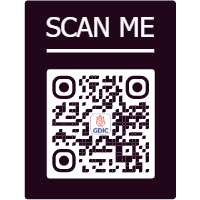
Lyme borreliosis is caused by a spirochete that is transmitted by the bite of ticks. The infection unusually begins with a characteristic expanding skin lesion, erythema migrans (EM: stage 1, localized infection) to later...
Lyme borreliosis is caused by a spirochete that is transmitted by the bite of ticks. The infection unusually begins with a characteristic expanding skin lesion, erythema migrans (EM: stage 1, localized infection) to later aggravation of symptoms in (EM: stage 2)
Possible manifestation of disseminated include the following:
- Secondary annular skins lesions
- Meningitis
- Cranial neuritis
- Peripheral neuritis
- Carditis
- Atrioventricular nodal block
- Migratory musculoskeletal pain.
Key Facts:
- The 20 known genospecies of B. burgdorferi sensu lato live in nature in enzootic cycles involving the 14 species.
- Ticks of the I. ricinus complex have larval, nymphal, and adult stage. They require blood meal at each stage.
- LB is a public health concern in India. The extent of the disease remains still obscured with major epidemiological gaps in understanding the natural history of the disease.
Clinical Manifestations:
- Early Infection: Stage 1 (Localized Infection)
- Early Infection: Stage 2 (Disseminated Infection)
- Late Infection: Stage 3 (Persistent Infection)
Stage 1: Here, a rash would be seen as a common sign of Lyme disease. But it is not necessary that it would appear in that regard.
The rash would usually be a single circle that would slowly spread from site of your tick bite.
It appears like a target or the bull's-eye. This rash would often feel warm to touch, not painful or any itchy in nature.
Rests of the stage 1 symptoms include the following:
Stage 2: Without any treatment, The Lyme disease is said to worsen. These symptoms in general, often would show up within the 3 to 10 weeks after the tick bite.
This stage can be associated with being more serious and also widespread. It is also called as the: early disseminated disease.
This includes the following symptoms:
- Rashes on the Body
- Neck Pain
- Muscle Weakness
- Irregular Heartbeats.
- Lower Back Pain
- Upper Limb Pain
- Swollen Eyelid
- Vision Loss In Severe Cases
Stage 3: This stage is also called as the late disseminated disease. The symptoms begin around 2 months to even 12 months after the tick bite.
Symptoms include the following:
- Arthritis in your large joints, particularly in the knees
- Pain and Swelling of Joints
- Intermittent Symptoms
Diagnosis Tests:
- ELISA
- Western Blot
- Antibody IgG and IgM test
- PCR
|
Pretest Probability |
Example |
Recommendation |
|
High |
Patients with erythema migrans |
Empirical antibiotic treatment without serologic testing |
|
Intermediate |
Patients with oligoarticular arthritis |
Serologic testing and antibiotic treatment if test results are positive |
|
Low |
Patients with nonspecific symptoms (myalgia, Athralgias, fatigue) |
Neither serologic testing nor antibiotic treatment |
Imaging Modalities
Neuroimaging is considered quite controversial in whether it would be able to provide any specific patterns. Other imaging Modalities include the following:
- Magnetic resonance imaging (MRI)
- Single-photon emission computed tomography (SPECT)
Differential diagnosis
Lyme disease is known as the “Great Mimicker” for the ability to further present it as other illnesses including the following:
- Fibromyalgia
- Depression
- Arthritis
- Multiple sclerosis
- Neuropathy
- Chronic fatigue
Ocular symptoms are also witnessed. These are as follows:
- Conjunctivitis
- Keratitis
- Uveitis
- Retinitis
Complications
The Lyme disease can further lead to serious complications.
Some of them are as follows:
- Facial nerve paralysis
- Arthritis
- Meningitis
- Irregularities in Heart Rhythm
Prevention Tips from Ganesh Diagnostic & Imaging Center
No vaccination available for prevention of the Lyme disease
However, following steps can be initiated to prevent Lyme disease.
- Try to wear long pants to further avoid any tick bite
- Monitor your children
- Try to keep the pets free of Tick
- To use the insect repellents
To seek Free Consultation from the Doctor:
Contact- Dr. Ravin Sharma, (MBBS, MD in Radiology)
Available: 24*7*365
Phone Number: +919212125996
Why Ganesh diagnostic and Imaging Centre should be your preference to screen you for Lyme disease?
At Ganesh Diagnostic and Imaging Centre, we are known for providing excellent service and care to its patients for decades. Lakhs of satisfied patients over the years!
It is an established and renowned diagnostic centre since 2001.
Their excellence is backed by NABH and NABL Accreditations.
NABH accreditation is proof of highest standard of care and service provided to the patients. NABL accreditation reflects the competency of laboratories and equipment based on some national and international standards.
Test report is available digitally too.
Ganesh Diagnostic and Imaging Centre is a one-stop solution for getting all kinds of tests done, as all services are available under one roof.
The aim of GDIC is to provide world’s finest technology at the lowest price.
We are based in Delhi NCR Region, and our branches are in the following regions:
Yamuna Vihar, Mangol Puri, Budh Vihar, Model Town, Hari Nagar, Nagloi
The rates of scans are reasonably priced. Ganesh Diagnostic and Imaging Centre also offer FLAT 50% OFF on many tests.
Tests conducted at Ganesh Diagnostic and Imaging Center
- Lyme Disease (IgG, IgM) Immunoblot- BOOK NOW
- Lyme Disease (Lyme borreliosis)- BOOK NOW
- Lyme Disease Antibodies IgG and IgM Test- BOOK NOW
- Lyme Disease DNA Qualitative Real Time Test- BOOK NOW
- Lyme Disease IgG and IgM Immunoblot- BOOK NOW
- Lyme Disease IgG Immunoblot Borrelia burgdorferi- BOOK NOW
References:
- https://www.sciencedirect.com/science/article/abs/pii/S0377123722001575
- Harrison’s Principles of Internal Medicine, 20 th edition, Volume 2 pages 696-698
- https://www.telegraphindia.com/health/lyme-and-other-tricky-tick-diseases-in-india/cid/1684530
- https://en.wikipedia.org/wiki/Lyme_disease









